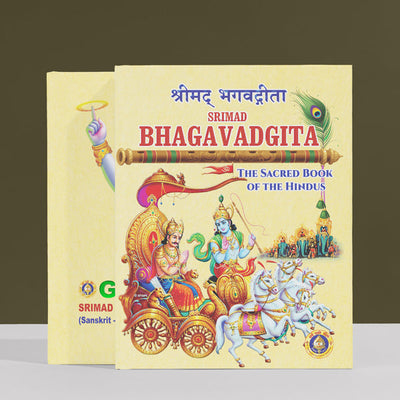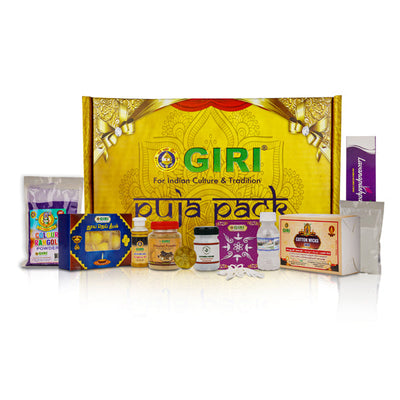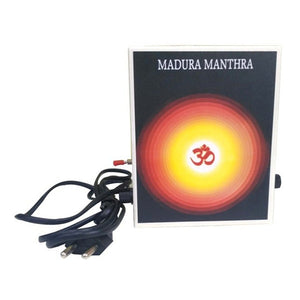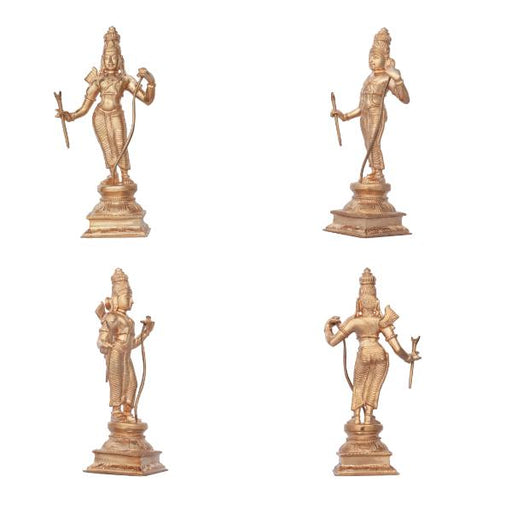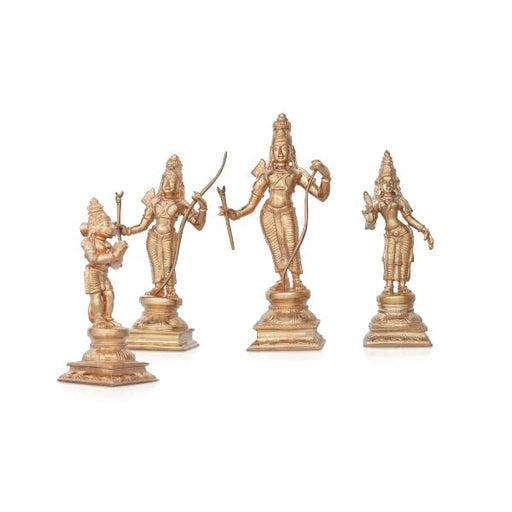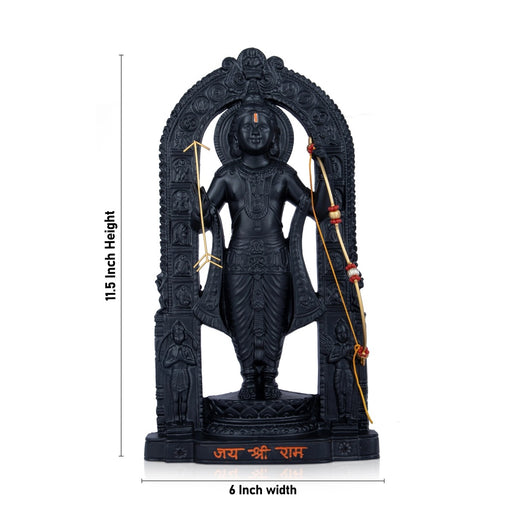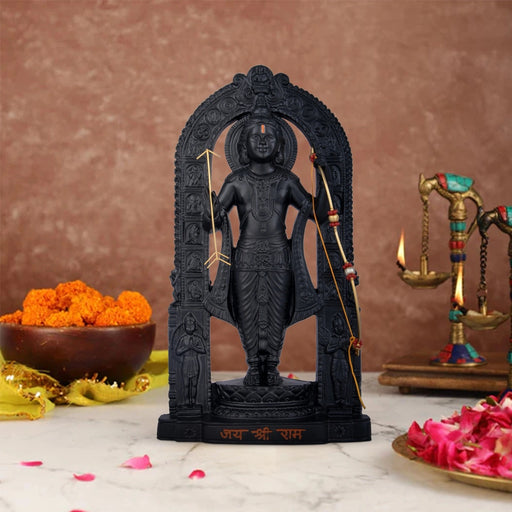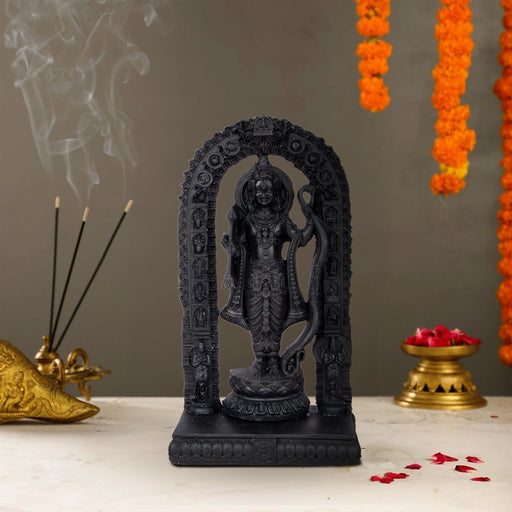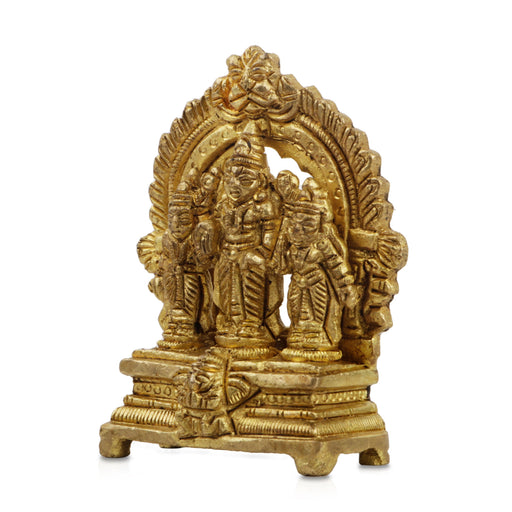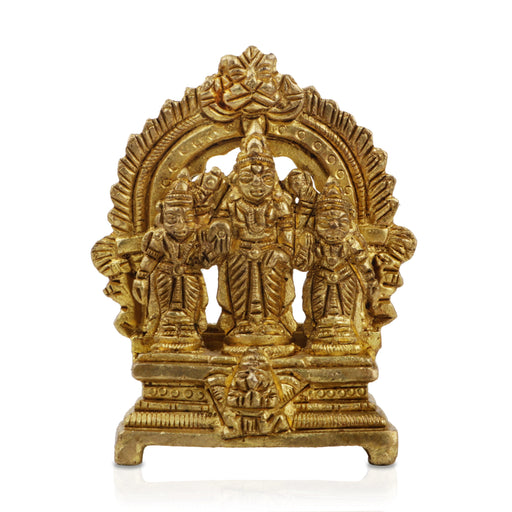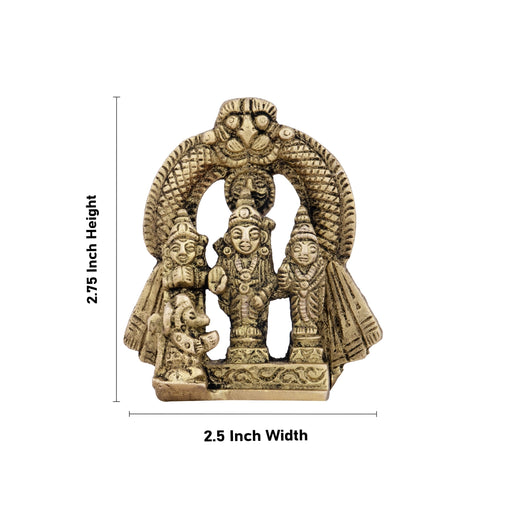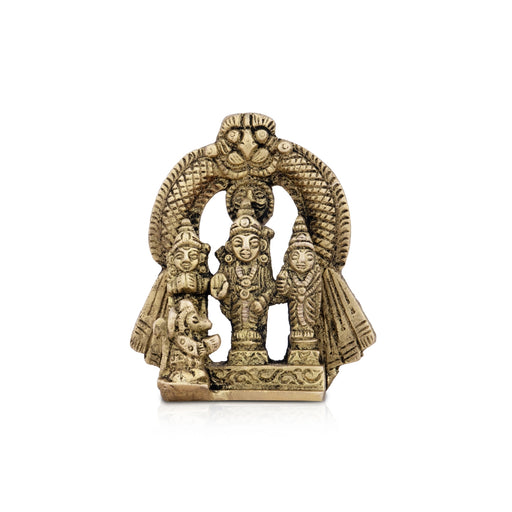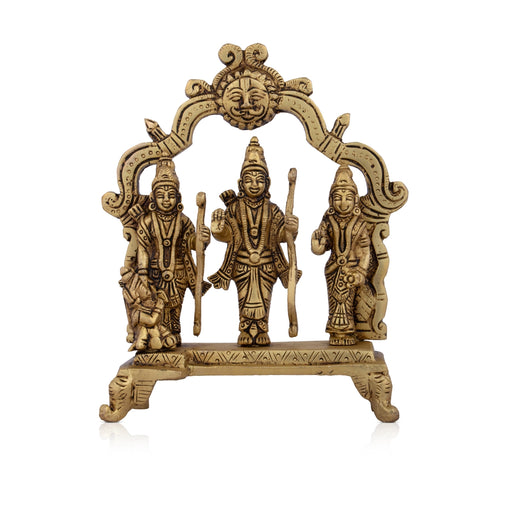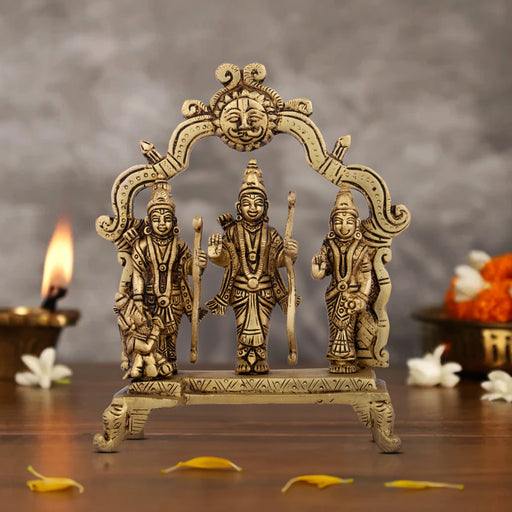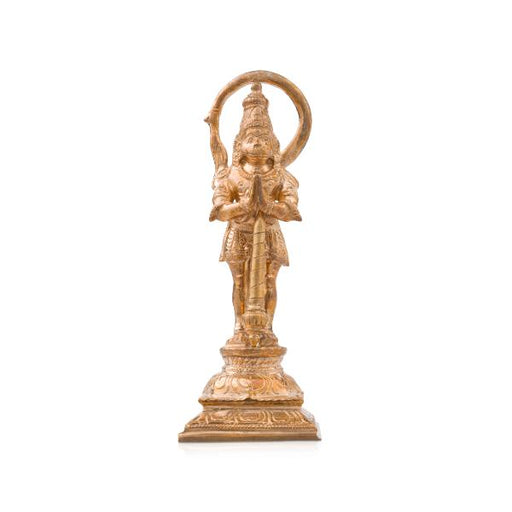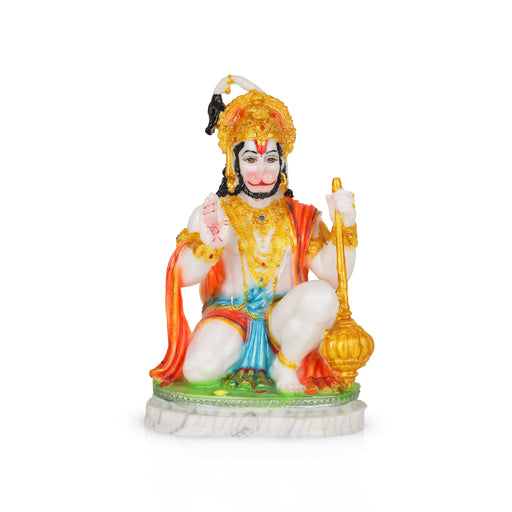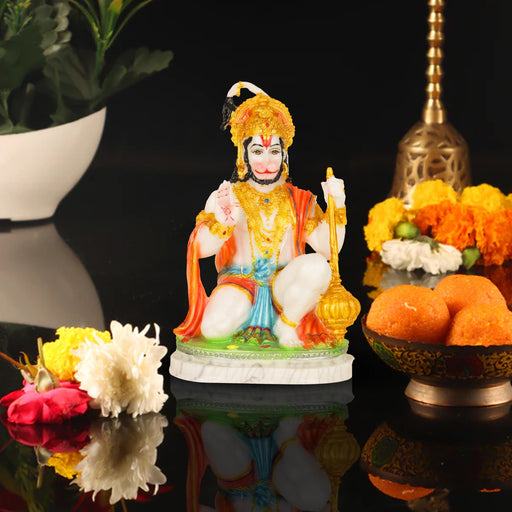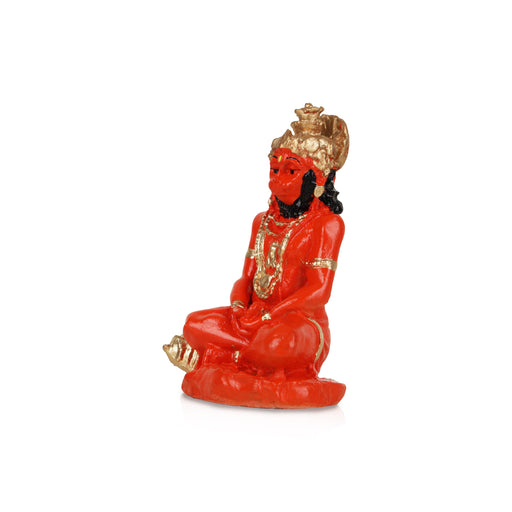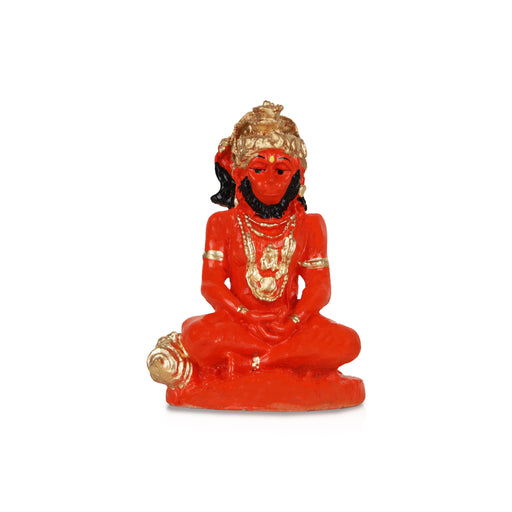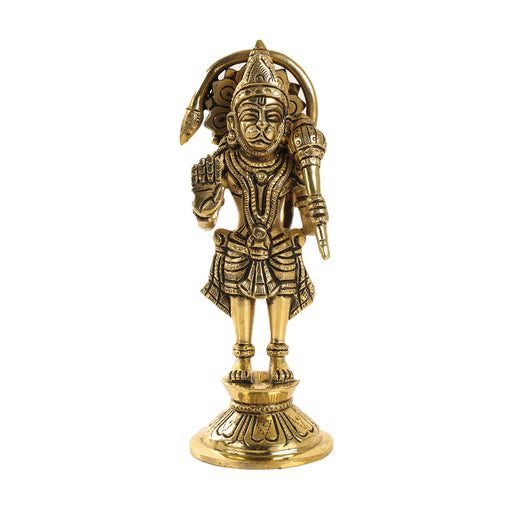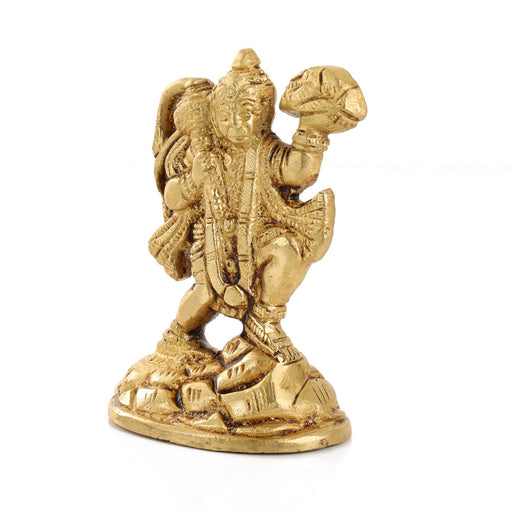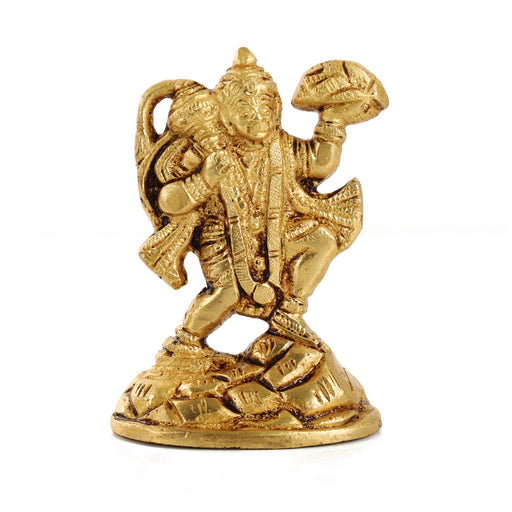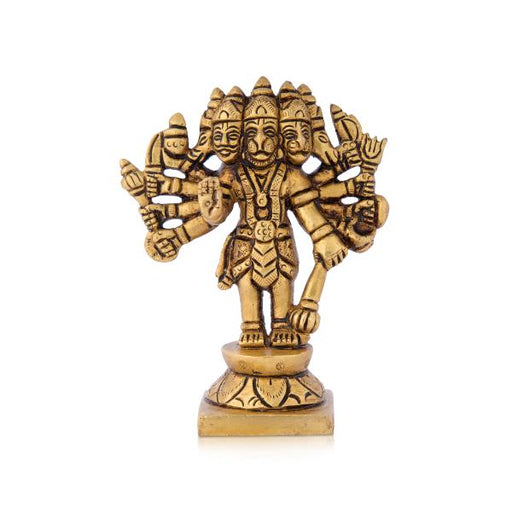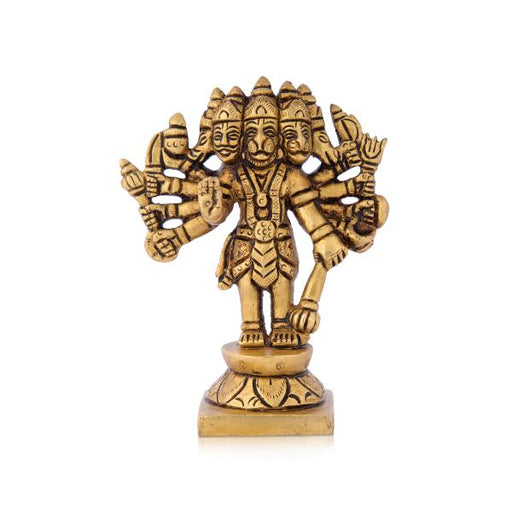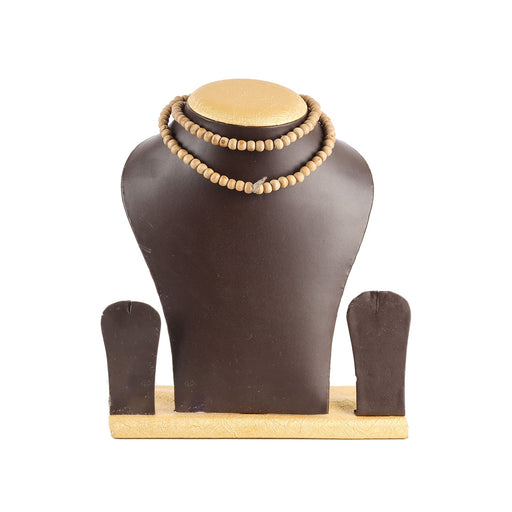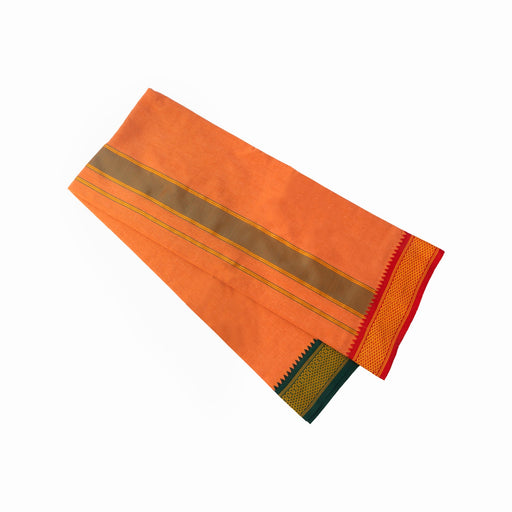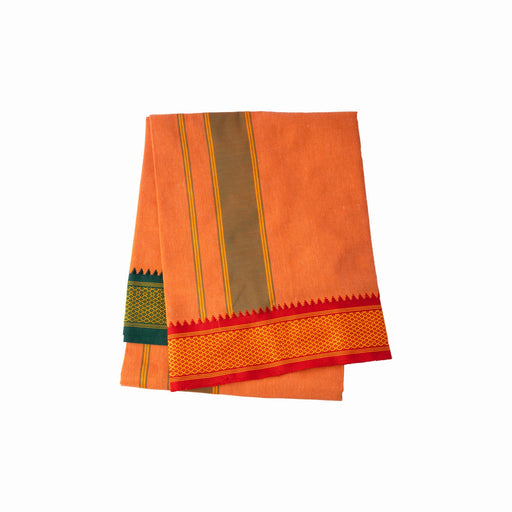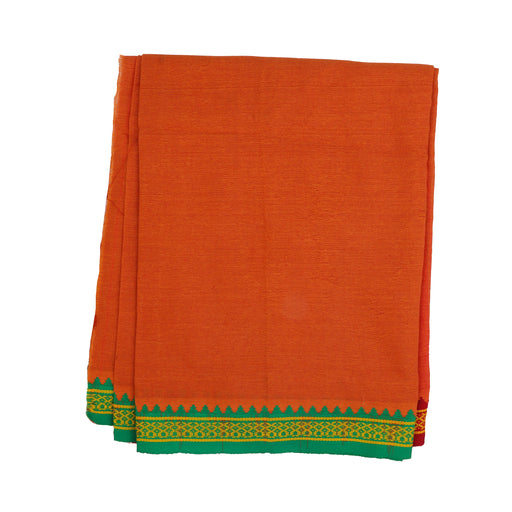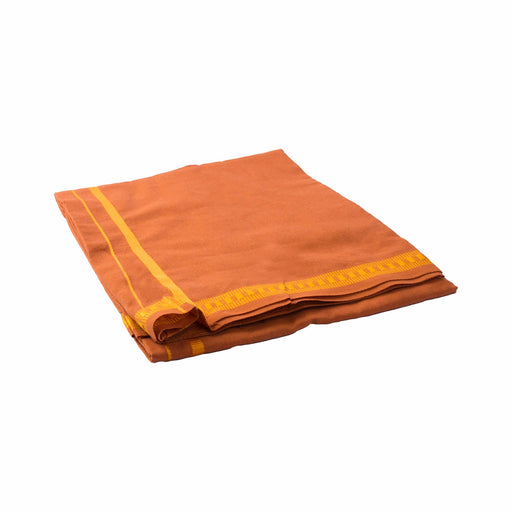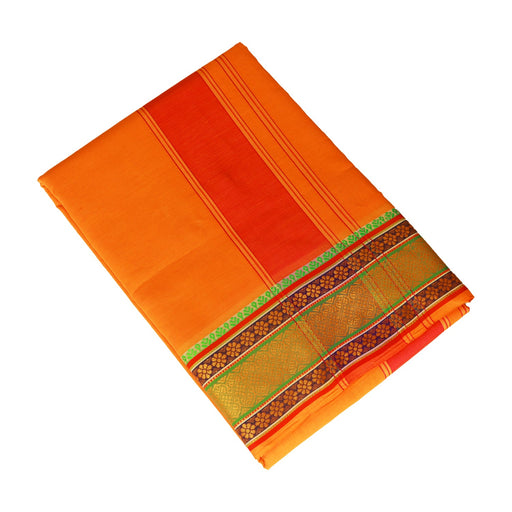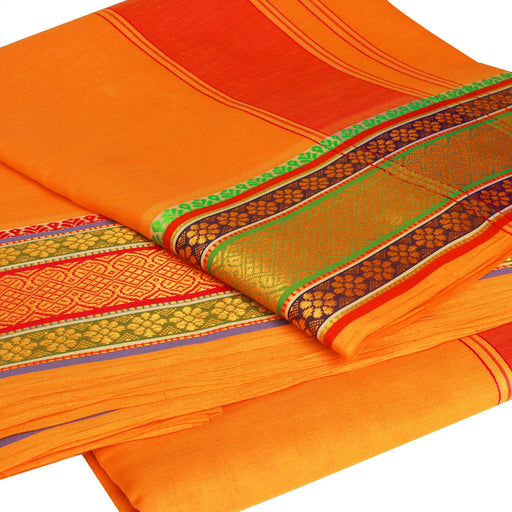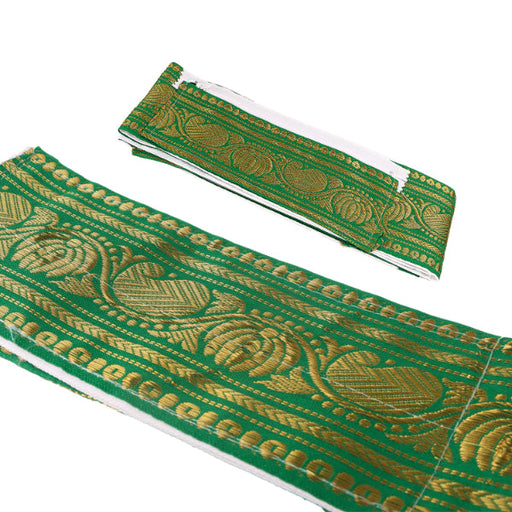
Ram Navami in 2024
Ram Navami in 2024 - Discover everything about Rama Navami
Ram Navami in 2024 will witness unprecedented celebrations and hold a special place in the memories of Ram devotees, especially residents of Ayodhya who are elated over the newly constructed Ram Mandir. Reportedly, the Temple Trust of Ayodhya Mandir is bracing up to receive at least 25 to 30 lakh visitors who are all eager to offer prayers to Ram Lalla. While chanting the mantra of Lord Ram and mere thoughts about him is believed to invoke growth in self-esteem, let’s immerse in the significance of Rama Navami in the following lines, by discussing everything associated with this festival that hails the seventh incarnation of Lord Vishnu.
Significance of Rama Navami: Lord Rama’s birth purpose and his observance of virtue
Lord Rama’s birth purpose should begin with a mention of Ravana, who was considered an unsurpassed devotee of Lord Shiva. When meditations fall into evil hands, destruction begins and Ravana was no different in this account. He set a well-thought-out ultimatum about his death conditions which were tough to be met with. Unfortunately, he underestimated the might of humans who were carelessly excluded in the death conditions drafted by Ravana.
This paved the way for Lord Rama’s birth purpose and was enough for the virtuous souls to save themselves. The problem with demons is that their egos refuse to accommodate co-existence and leave all the angels rushing towards Vishnu, screaming for help.
Ram has a sister named Shanta who married Rishyasringa, the sage who conducted the ‘putra kameshti yagna’ in which the four sons of Dasaratha were born. Interestingly, not only Ram, but also his three brothers are incarnations of Lord Vishnu. Bharata and Shatrughna are incarnations of the Sudarshana Chakra, Lakshmana is the incarnation of Sesha or serpent on whom Vishnu rests.
When a common man’s intellect is too poor to distinguish good and bad or analyze the consequences of their actions, they could turn to Ramayana and Mahabharata for reference, since Ram’s actions must be imitated and Mahabharata actions should be avoided, including Yudhisthira and Arjuna. Ram's obedience to parents, his faith and commitment to his wife and brothers, his concern for his subjects, his fearlessness in the face of adversaries, and his role as the preserver of this planet, destroyer of enemies, and defender of all living things are all qualities that still need to be upheld today.
Lunar Calendar birth date and spring festival
The event takes place on the ninth day of the bright half, or Shukla Paksha, of the Chaitra lunar cycle, which occurs in the Hindu calendar's first month of March to April. It is a feature of the springtime Chaitra Navaratri festival as well.
After nine days of worshipping the nine incarnations of Goddess Durga, known as Chaitra Navratri, it is said that Lord Ram and his three brothers, Lakshman, Bharat, and Shatrughan, descended to Earth. On this day, people go to temples honoring Lord Ram, often referred to as ‘Maryada Purushottam,’ and offer prayers asking him to guide them toward the proper way to live and act.
The meaning of the words ‘Maryada Purushottam’ is multifaceted. ‘Maryada’ signifies ‘good conduct’ in a general sense, while ‘Purushottam’ denotes superiority among males. Ram, then, represents the best of all men since he lived his entire life adhering to ‘maryada.’
In 2024, Wednesday, April 17, will be Rama Navami. The birth took place in the middle of the Hindu day, during the Madhyahna time. The best time to do Rama Navami Puja ceremonies is during Madhyahna, which lasts for six Ghatis, or roughly two hours and thirty-five minutes. Temples represent the halfway of Madhyahan as the birth moment of Lord Rama, and this is also the period when Shri Rama was born. This is the pinnacle of the celebration when the recital of Shri Rama is done.
The Gregorian calendar and the widespread use of the Western clock have led many people to believe that noon is Madhyahna moment. This would have been true if sunrise and sunset happened precisely at six in the morning and six in the evening, respectively, however, most localities have differing sunrise and sunset times from six o'clock. Therefore, the precise range of time to commemorate Lord Rama's birthday is from 11 a.m. to 1 p.m.
Rituals associated with Rama Navami
There are regional variations in the Rama Navami ceremonies and customs across India. Recitations from the Hindu epic Ramayana, which tells the story of Rama, are performed to commemorate the day. Hindus who practice Vaishnavism commemorate the occasion by going to temples, praying, fasting, attending spiritual talks, and leading devotional song circles (kirtans) or bhajans. Some devotees place an image of Rama in a cradle as a way to worship him like a baby. There are also planned community dinners and charitable events. For many Hindus, the festival serves as a time for moral introspection.
This day is significant for festivities in Ayodhya and many other Rama temples across India. There are various locations where Rama, Sita, Lakshmana and Hanuman conduct their chariot processions or ratha yatras. Many people in Ayodhya visit the Rama temple after taking a dip in the holy Sarayu river.
Regional variations of Rama Navami celebrations
In North India, elaborate processions portraying episodes from the Ramayana are performed, particularly at Ayodhya, which is reputed to be the birthplace of Lord Rama. Additionally, people attend Rama Navami melas, or fairs, where a variety of cultural events are scheduled.
In the states of Tamil Nadu, Karnataka, Andhra Pradesh, and Telangana, the day of Ram Navami is also commemorated as the day that Lord Ram wed Mother Sita. All devotees wishing to commemorate the day congregate at the Rameswaram Temple, which is situated in Tamil Nadu. Devotees swarm Bhadrachalam in Telangana to see Ram and his whole family.
People wielding swords and tridents, accompanied by tableaus adorned with saffron flags, carrying idols of Ram Darbar, and dressed as Ram, Laxman, Sita, and Hanuman, take part in demonstrations across East India, particularly in Kolkata.
The event is observed in Maharashtra with bhajans and the reciting of the Ramayana. Before Ram Navami, some devotees also observe a nine-day fast known as 'Navaratri.'
Wrapping up
Let's conclude our conversation about Rama Navami by inhaling deeply and chanting in a lovely, rhythmic tone while sitting in the ideal yogic stance with a straight spine. It's now time to recite Ra-a Ma-a, also known as ‘Shri Ram, Jai Ram Jai Jai Ram,’ which is highly prosperous, particularly on Rama Navami. Peace, patience, and the fulfillment of one's goals are experienced by those who worship Lord Ram and chant his mantras, also known as Ram mantras. In addition to reciting these mantras, groups can also recite the Hanuman Chalisa, Sundar Kand, and Ram Raksha Stotra.

-
Ram Darbar Murti - 6 Inches | Panchaloha Statue/ Ram Darbar Idol for Pooja/ 1.350 Kgs Approx
Original price Rs. 21,000.00 - Original price Rs. 21,000.00Original priceRs. 21,000.00Rs. 21,000.00 - Rs. 21,000.00Current price Rs. 21,000.00• Elevate your home or sacred space with the timeless elegance and spiritual significance of this intricately designed masterpiece. • Our exquisit...
View full detailsOriginal price Rs. 21,000.00 - Original price Rs. 21,000.00Original priceRs. 21,000.00Rs. 21,000.00 - Rs. 21,000.00Current price Rs. 21,000.00 -
Ayodhya Rama Idol - 11.5 x 6 Inches | Resin Statue/ Ayodhya Ramar Statue for Pooja
Original price Rs. 1,750.00 - Original price Rs. 1,750.00Original priceRs. 1,750.00Rs. 1,750.00 - Rs. 1,750.00Current price Rs. 1,750.00Bring home this exquisite "Ayothi Ramar" Polyresin Set, a captivating portrayal of one of Hinduism's most revered narratives. This intricately cra...
View full detailsOriginal price Rs. 1,750.00 - Original price Rs. 1,750.00Original priceRs. 1,750.00Rs. 1,750.00 - Rs. 1,750.00Current price Rs. 1,750.00 -
Ayodhya Rama Idol - 7 Inches | Resin Statue/ Ramar Statue for Pooja
Original price Rs. 900.00 - Original price Rs. 900.00Original priceRs. 900.00Rs. 900.00 - Rs. 900.00Current price Rs. 900.00Bring home this exquisite "Ayodya Ramar" Polyresin Set, a captivating portrayal of one of Hinduism's most revered narratives. This intricately cra...
View full detailsOriginal price Rs. 900.00 - Original price Rs. 900.00Original priceRs. 900.00Rs. 900.00 - Rs. 900.00Current price Rs. 900.00 -
Ram Darbar Murti - 3 Inches | Brass Idol/ Antique Finish Ram Darbar Statue for Pooja/ 160 Gms Approx
Original price Rs. 580.00 - Original price Rs. 580.00Original priceRs. 580.00Rs. 580.00 - Rs. 580.00Current price Rs. 580.00• Elevate Your Devotional Space with the Antique Finish Brass Perumal, Bhudevi, and Sridevi Statue - also referred to as 'Ram Darbar Murti'. • Thi...
View full detailsOriginal price Rs. 580.00 - Original price Rs. 580.00Original priceRs. 580.00Rs. 580.00 - Rs. 580.00Current price Rs. 580.00 -
Ram Darbar Statue with Arch - 2.75 x 2.5 Inches | Antique Brass Statue/ Ram Darbar Murti for Pooja
Original price Rs. 280.00 - Original price Rs. 280.00Original priceRs. 280.00Rs. 280.00 - Rs. 280.00Current price Rs. 280.00King Ram was a legendary king of Ayodhya, the heir of King Dasharatha, and the central figure in the Ramayana. The King has often been depicted in ...
View full detailsOriginal price Rs. 280.00 - Original price Rs. 280.00Original priceRs. 280.00Rs. 280.00 - Rs. 280.00Current price Rs. 280.00 -
Ram Darbar Statue with Arch - 7 x 5.5 Inches | Brass Statue/ Ram Darbar Murti for Pooja/ 1.092 Kgs Approx
Original price Rs. 2,600.00 - Original price Rs. 2,600.00Original priceRs. 2,600.00Rs. 2,600.00 - Rs. 2,600.00Current price Rs. 2,600.00King Ram was a legendary king of Ayodhya, the heir of King Dasharatha, and the central figure in the Ramayana. The King has often been depicted in ...
View full detailsOriginal price Rs. 2,600.00 - Original price Rs. 2,600.00Original priceRs. 2,600.00Rs. 2,600.00 - Rs. 2,600.00Current price Rs. 2,600.00Sold out -
Anjaneya Statue - 6 Inches | Hanuman Standing/ Panchaloha Statue/ Hanuman Murti for Pooja/ 500 Gms Approx
Original price Rs. 7,200.00 - Original price Rs. 7,200.00Original priceRs. 7,200.00Rs. 7,200.00 - Rs. 7,200.00Current price Rs. 7,200.00• Enhance your sacred space with the divine presence of the Hanuman statue. • This Panchaloham Anjaneya Statue is a timeless embodiment of divine...
View full detailsOriginal price Rs. 7,200.00 - Original price Rs. 7,200.00Original priceRs. 7,200.00Rs. 7,200.00 - Rs. 7,200.00Current price Rs. 7,200.00 -
Anjaneya Statue - 9 Inches | Hanuman Statue/ Resin Hanuman Murti for Home Decor
Original price Rs. 1,200.00 - Original price Rs. 1,200.00Original priceRs. 1,200.00Rs. 1,200.00 - Rs. 1,200.00Current price Rs. 1,200.00• Many devotees worship Hanuman, who is revered as a deity and is recognised for his tenacity, loyalty, and devotion. • To make a robust and beaut...
View full detailsOriginal price Rs. 1,200.00 - Original price Rs. 1,200.00Original priceRs. 1,200.00Rs. 1,200.00 - Rs. 1,200.00Current price Rs. 1,200.00 -
Anjaneya Statue - 4.5 Inches | Marble Hanuman Statue/ Hanuman Murti for Home Decor
Original price Rs. 225.00 - Original price Rs. 225.00Original priceRs. 225.00Rs. 225.00 - Rs. 225.00Current price Rs. 225.00• This Marble Dust Hanuman Statue is an exquisite representation of Lord Hanuman crafted from marble dust, combining traditional artistry with the ...
View full detailsOriginal price Rs. 225.00 - Original price Rs. 225.00Original priceRs. 225.00Rs. 225.00 - Rs. 225.00Current price Rs. 225.00 -
Ram Mandir - 6.5 x 5 Inches | 3D Model Ram Janmabhoomi/ Shri Ram Mandir for Home Decor
Original price Rs. 750.00 - Original price Rs. 750.00Original priceRs. 750.00Rs. 750.00 - Rs. 750.00Current price Rs. 750.00• Capture the essence of cultural heritage and architectural marvel with our meticulously crafted Ram Mandir 3D Model statue. Designed with precisi...
View full detailsOriginal price Rs. 750.00 - Original price Rs. 750.00Original priceRs. 750.00Rs. 750.00 - Rs. 750.00Current price Rs. 750.00 -
Hanuman Standing - 7 Inches | Anjaneya Statue/ Brass Antique Statue/ Hanuman Murti for Pooja/ 840 Gms Approx
Original price Rs. 2,060.00 - Original price Rs. 2,060.00Original priceRs. 2,060.00Rs. 2,060.00 - Rs. 2,060.00Current price Rs. 2,060.00• Enhance your sacred space with the divine presence of the Hanuman statue. • This Brass Anjaneya Statue is a timeless embodiment of divine stren...
View full detailsOriginal price Rs. 2,060.00 - Original price Rs. 2,060.00Original priceRs. 2,060.00Rs. 2,060.00 - Rs. 2,060.00Current price Rs. 2,060.00 -
Pahad Hanuman - 4 Inches | Anjaneya Statue/ Antique Brass Statue/ Hanuman Murti for Pooja/ 380 Gms Approx
Original price Rs. 900.00 - Original price Rs. 900.00Original priceRs. 900.00Rs. 900.00 - Rs. 900.00Current price Rs. 900.00• Embark on a spiritual journey with our Antique Finish Pahad Hanuman statue, a divine masterpiece that encapsulates the strength and devotion of L...
View full detailsOriginal price Rs. 900.00 - Original price Rs. 900.00Original priceRs. 900.00Rs. 900.00 - Rs. 900.00Current price Rs. 900.00 -
Panchamuga Hanuman - 4 Inches | Anjaneya Statue/ Antique Brass Statue/ Hanuman Murti for Pooja
Original price Rs. 1,100.00 - Original price Rs. 1,100.00Original priceRs. 1,100.00Rs. 1,100.00 - Rs. 1,100.00Current price Rs. 1,100.00• Invite the divine energies of Panchamukhi Hanuman into your home with the Brass Panchamukhi Hanuman Statue. • This Panchamukhi Anjaneya Statue ...
View full detailsOriginal price Rs. 1,100.00 - Original price Rs. 1,100.00Original priceRs. 1,100.00Rs. 1,100.00 - Rs. 1,100.00Current price Rs. 1,100.00 -
Tulasi Mala | Tulsi Japa Mala/ Thulsi Mala/ Thulasi Mala for Meditation
Original price Rs. 275.00 - Original price Rs. 550.00Original priceRs. 275.00 - Rs. 550.00Rs. 275.00 - Rs. 550.00Current price Rs. 275.00• Did you know that like Tulsi plant, original Tulsi mala/Thulasi malai is also very auspicious? A religious necklace made of Tulasi (holy basil) b...
View full detailsOriginal price Rs. 275.00 - Original price Rs. 550.00Original priceRs. 275.00 - Rs. 550.00Rs. 275.00 - Rs. 550.00Current price Rs. 275.00 -
Thulsi Mala with Copper Knot | 108 Beads Tulasi Mala/ Tulsi Japa Mala/ Thulasi Mala for Men & Women
Original price Rs. 150.00 - Original price Rs. 275.00Original priceRs. 150.00 - Rs. 275.00Rs. 150.00 - Rs. 275.00Current price Rs. 150.00• Did you know that like Tulsi plant, original Tulsi mala/Thulasi malai is also very auspicious? A religious necklace made of Tulasi (holy basil) b...
View full detailsOriginal price Rs. 150.00 - Original price Rs. 275.00Original priceRs. 150.00 - Rs. 275.00Rs. 150.00 - Rs. 275.00Current price Rs. 150.00 -
Tulasi Mala - 14 Inches | Kanthi Mala/ Tulsi Mala for Men & Women
Original price Rs. 60.00 - Original price Rs. 60.00Original priceRs. 60.00Rs. 60.00 - Rs. 60.00Current price Rs. 60.00Tulasi is considered an auspicious plant in the traditions of India. Wearing Tulasi maalai has been followed by our ancestors to denote honour and ...
View full detailsOriginal price Rs. 60.00 - Original price Rs. 60.00Original priceRs. 60.00Rs. 60.00 - Rs. 60.00Current price Rs. 60.00 -
Tulasi Mala | White Tulsi Mala/ Thulsi Mala/ Thulasi Mala for Men & Women
Original price Rs. 60.00 - Original price Rs. 150.00Original priceRs. 60.00 - Rs. 150.00Rs. 60.00 - Rs. 150.00Current price Rs. 60.00• Did you know that like Tulsi plant, original Tulsi mala/Thulasi malai is also very auspicious? A religious necklace made of Tulasi (holy basil) b...
View full detailsOriginal price Rs. 60.00 - Original price Rs. 150.00Original priceRs. 60.00 - Rs. 150.00Rs. 60.00 - Rs. 150.00Current price Rs. 60.00 -
Tulasi Mala with Sri Ram Locket - 13 Inches | Kanthi Mala/ Tulsi Mala for Men & Women
Original price Rs. 200.00 - Original price Rs. 200.00Original priceRs. 200.00Rs. 200.00 - Rs. 200.00Current price Rs. 200.00Tulasi is considered an auspicious plant in the traditions of India. Wearing Tulasi maalai has been followed by our ancestors to denote honour and ...
View full detailsOriginal price Rs. 200.00 - Original price Rs. 200.00Original priceRs. 200.00Rs. 200.00 - Rs. 200.00Current price Rs. 200.00 -
Veshti - 2 Mtrs | Cotton Material/ Kavi Colour Vesti/ Padayappa Border Dhoti for Men
Original price Rs. 240.00 - Original price Rs. 240.00Original priceRs. 240.00Rs. 240.00 - Rs. 240.00Current price Rs. 240.00• Step out in style and grace with our veshti for men, the perfect addition to your traditional wardrobe! • Costume/attire is a cultural mirror t...
View full detailsOriginal price Rs. 240.00 - Original price Rs. 240.00Original priceRs. 240.00Rs. 240.00 - Rs. 240.00Current price Rs. 240.00 -
Veshti - 2 Mtrs | Thalapathi Border Design Vesti/ Dhoti for Men/ Assorted Colour
Original price Rs. 140.00 - Original price Rs. 230.00Original priceRs. 140.00 - Rs. 230.00Rs. 140.00 - Rs. 230.00Current price Rs. 140.00• Step out in style and grace with our veshti for men, the perfect addition to your traditional wardrobe! • Costume/attire is a cultural mirror t...
View full detailsOriginal price Rs. 140.00 - Original price Rs. 230.00Original priceRs. 140.00 - Rs. 230.00Rs. 140.00 - Rs. 230.00Current price Rs. 140.00 -
Veshti - 2 Mtrs | Dhoti/ Pentex Border Vesti for Men/ Assorted Colour
Original price Rs. 160.00 - Original price Rs. 160.00Original priceRs. 160.00Rs. 160.00 - Rs. 160.00Current price Rs. 160.00• Step out in style and grace with our veshti for men, the perfect addition to your traditional wardrobe! • Costume/attire is a cultural mirror t...
View full detailsOriginal price Rs. 160.00 - Original price Rs. 160.00Original priceRs. 160.00Rs. 160.00 - Rs. 160.00Current price Rs. 160.00 -
Veshti - 2 Mtrs | Gundanchi Border Dhoti/ Vesti for Men/ Assorted Colour
Original price Rs. 140.00 - Original price Rs. 400.00Original priceRs. 140.00 - Rs. 400.00Rs. 140.00 - Rs. 400.00Current price Rs. 140.00• Step out in style and grace with our veshti for men, the perfect addition to your traditional wardrobe! • Costume/attire is a cultural mirror t...
View full detailsOriginal price Rs. 140.00 - Original price Rs. 400.00Original priceRs. 140.00 - Rs. 400.00Rs. 140.00 - Rs. 400.00Current price Rs. 140.00 -
Veshti - 2 Mtrs | Kambi Karai Design Vesti/ Dhoti for Men/ Assorted Colour
Original price Rs. 300.00 - Original price Rs. 340.00Original priceRs. 300.00 - Rs. 340.00Rs. 300.00 - Rs. 340.00Current price Rs. 300.00• Step out in style and grace with our veshti for men, the perfect addition to your traditional wardrobe! • Costume/attire is a cultural mirror t...
View full detailsOriginal price Rs. 300.00 - Original price Rs. 340.00Original priceRs. 300.00 - Rs. 340.00Rs. 300.00 - Rs. 340.00Current price Rs. 300.00 -
Veshti - 9 x 5 Muzham | Vesti/ Big Border Dhoti for Men/ Assorted Colour
Original price Rs. 1,090.00 - Original price Rs. 1,155.00Original priceRs. 1,090.00 - Rs. 1,155.00Rs. 1,090.00 - Rs. 1,155.00Current price Rs. 1,090.00• Step out in style and grace with our veshti for men, the perfect addition to your traditional wardrobe! • Costume/attire is a cultural mirror t...
View full detailsOriginal price Rs. 1,090.00 - Original price Rs. 1,155.00Original priceRs. 1,090.00 - Rs. 1,155.00Rs. 1,090.00 - Rs. 1,155.00Current price Rs. 1,090.00 -
Dhoti Belt | Veshti Belt/ Satin with Jari Border Waist Belt for Men/ Assorted Design & Colour
Original price Rs. 190.00 - Original price Rs. 190.00Original priceRs. 190.00Rs. 190.00 - Rs. 190.00Current price Rs. 190.00• A dhoti or a veshti appears unique mainly owing to the vibrant borders that outline the white. • Presenting our functional Veshti Belt. It is u...
View full detailsOriginal price Rs. 190.00 - Original price Rs. 190.00Original priceRs. 190.00Rs. 190.00 - Rs. 190.00Current price Rs. 190.00

